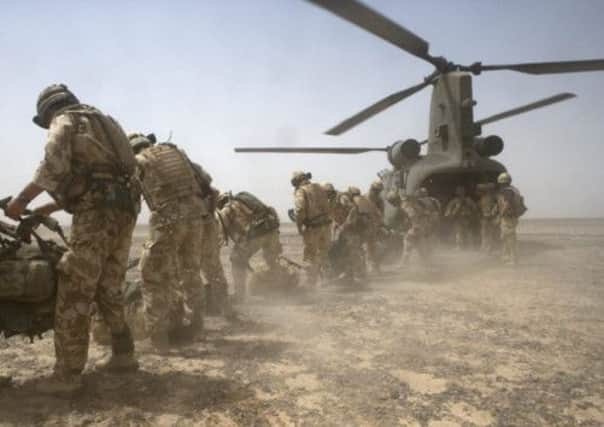Leaders: Morality must survive on the battlefield


The world of firefight, ambush and airstrike, disfigurement and random death lies a long way out of society’s norms. Some could argue that society has no real business judging people who live in this world.
That is why it is important that the Royal Marine found guilty of murdering a wounded insurgent in Afghanistan in September 2011 was tried in a court martial. Some may think the guilty verdict to be an outrage. After all, there was no disagreement that the victim was an armed enemy combatant sworn to kill British soldiers if he could.
Advertisement
Hide AdAdvertisement
Hide AdOthers may think the not guilty verdicts are also appalling. The cleared two had been present at the killing, did not try to prevent it, and therefore, by the standards applied by most criminal courts, equally guilty even though they did not pull the trigger. But this is certainly not the kind of scenario which ever gets put before a civilian court.
This was a war zone in which the participants – British soldiers and Afghan insurgents – were not only trying to kill each other but also, in the case of the Royal Marines, had lawful justification for doing so when in a firefight.
Moreover, Helmand is a battlefield where the Royal Marines’ enemies do not obligingly wear uniform. They can be apparently innocent civilians one moment and a lethal enemy the next. Counter insurgency operations are especially difficult. Amid such brutality and death there is an altered morality, and so having rules about killing may seem bizarre and sympathy for the marines more appropriate.
Nevertheless, rules do exist for a very good reason. Morality may be altered, but it still exists. The Geneva Convention to which British armed forces have long subscribed, says that combat ends when the enemy either surrenders or is incapacitated so much that fighting becomes impossible. Killing the enemy after either of these points becomes murder.
The conversations recorded by the Royal Marines at the time show they knew that, especially the one convicted of murder and who was a sergeant in command of the others. Some justification provided by the sergeant, also recorded, was that he assumed the victim would not have respected the Geneva Convention and would have happily murdered the Royal Marines had he been in a position to do so. He claimed he believed the man was dead before he shot him.
Clearly this was rightly rejected. There is no justification at all. The Royal Marines were there in a humanitarian cause – the removal and suppression of a Taleban regime which not only supported and facilitated killing and terrorising of other nations including ours, but also brutalised their own people. By murdering this man, the sergeant descended to the level of the Taleban.
An aristocat among vagrants
Scroungers are generally regarded as the lowest of the low, and certainly not the type who get statues put up to commemorate them. Feral cats can be even more unwanted and sometimes people pay money to have them removed.
Not in St Andrews, apparently. There, the townsfolk have clubbed together to raise £5,000 for a life-size bronze depiction of a ginger-and-white tomcat which isn’t even dead and not known for doing anything admirable or even just merely notable. It does absolutely nothing except to stalk the streets and extract food from whatever soft-hearted source it comes across.
Advertisement
Hide AdAdvertisement
Hide AdSo starry-eyed have St Andreans become about this vagrant, it has been even named – Hamish McHamish – with a book, a Facebook page, and a Twitter
account available to chronicle its life of luxury from the cat-loving townsfolk. To cap all that, a superstition has grown up amongst the citizenry that to refuse the beast entry to your home and to fail to fall for the green-eyed creature’s demands to be fed is to invite bad luck. And this in a university town.
Even Fife council has come under his spell, allowing valuable town space for the statue.
What next? A Hamish McHamish trail round the town pointing out favourite begging spots and ideal picture-bagging locations?
It does have the sense of an internet sensation about it. It is often said that dogs have owners and cats have staff.
Hamish McHamish has certainly managed to attract probably the biggest number of devoted staff than any other cat in Scotland, and for that alone the erection of a statue might indeed be fitting. Literally a monument to feline superiority.